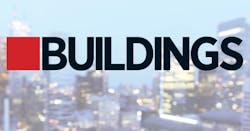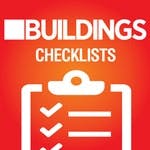Self-adhered roofing systems are a relatively recent development and they’ve gained popularity by eliminating the tedious process of applying adhesive and waiting for it to cure.
The lack of a pail of adhesives means there are no fumes to bother building occupants, no risk of weather conditions impacting the curing of the adhesives and a quicker installation time, which could ultimately save building owners money.
Here’s how to determine whether a self-adhered membrane is the best choice for your roof.
[On topic: Resilient Roofing, Tech and Future Trends]
Critical Roof Roles
There are two key parts of your roof that can benefit from incorporating self-adhered technology: the underlayment and the weathering layer, according to David Martiny, director of product management at Firestone Building Products. Both play important roles in keeping your roof functional.
The underlayment is used mainly as an air and vapor retarder or barrier. There is a wide range of both self-adhered and non-self-adhered underlayments to meet the unique needs of any roof, Martiny says.
BUILDINGS Podcast
Staying Ahead with TRUFAST Roofing Fasteners
[podcast]
Jason Wigboldly, from TRUFAST roofing fasteners, chats with Janelle Penny at IRE 2019. Jason talks about providing fasteners to the entire building envelope for commercial roofs, side walls and below grade.
He also discusses new energy codes for insulation and how they are staying ahead of the curve. Listen now >>
“It’s also used as a secondary layer in the roof,” he adds. “It’s not only an air and vapor barrier, it’s a second layer of waterproofing for buildings that are mission critical. The secondary layer is in case of failure of the primary layer.”
The weathering surface is the upper layer of the roof. True to its name, its job is to stand up against harsh weather. It’s the first line of defense against moisture, hail, debris and other environmental hazards that can threaten the roof’s stability and the inside of your building.
Self-adhered products can be a good fit for either category (or both), but it’s important to know what you need each layer to accomplish before you start looking at products.
Selecting a Self-Adhered Underlayment
Start by determining what function your underlayment needs to perform, then check product specifications to see which products can meet those demands. You might have different expectations depending on whether you’re using it as an air and vapor retarder, barrier or secondary layer.
[Related: Roof Repairs in Extreme Weather Conditions]
For example, you might decide that you need a product with Class I vapor permeability and a permeance level of no more than 0.1 perms.
You’ll also want to consider these six factors, Martiny advises:
1. Application temperature. How warm or cold can it be when the underlayment is installed? This is an important consideration if temperatures are fluctuating.
2. Exposure. Can it be left exposed? How quickly does the next layer have to be installed?
3. Adhesion to the substrate. Does it require primer? If not, that’s one fewer step involved in your roofing installation, Martiny says. Also make sure that the underlayment material is compatible with your substrate.
4. Fire resistance. “That’s definitely a criteria,” Martiny says. “If it’s on a steel or concrete deck, it’s less challenging. Refer to companies like FM Global – they can help guide you through the fire code and fire resistance.”
5. Self-sealing. “This is mainly for pitched roofing where you have to nail shingles or a roof covering,” explains Martiny. “Self-sealing is critical.”
6. Traffic resistance. “Is it a trafficable membrane? Some membranes are not recommended for light traffic during installation,” says Martiny. “Most of the time they cannot be left exposed, so that means you have to stage your work differently.”
Considerations for Self-Adhered Weathering Surfaces
A membrane used as a weathering surface requires a similar selection process. Like an underlayment, a weathering surface first has to meet the requirements of your specific building. That might limit your choices to a certain type of membrane or a requirement set forth in your local codes.
BUILDINGS Checklist
Build Your Roofing File Checklist
Use this checklist to help organize your roofing records so when you need them, they are all in one place. Get yours here >>
From there, Martiny recommends including these six factors in your decision:
1. Adherence to the substrate. This is vital for a good installation. Does it require any primer?
2. Application temperature and window. Similar to the underlayment, you need to consider whether the outdoor temperature is within the range that the manufacturer recommends.
3. Roll dimensions. “Typically on larger jobs, the bigger the better,” Martiny explains. “If your roof is on a high rise building or you have a lot of penetrations on the roof, sometimes small and handy is better.”
[More IRE: Is It Time to Replace Your Skylight?]
4. Flexibility of the membrane. “This is definitely a plus for fully adhered systems because the more flexible your membrane is, the easier the adhesion on the substrate,” says Martiny. “The membrane conforms to the disparities of the substrate.”
5. Rolled or brushed application. Applying pressure to the top is usually required to make the membrane stick. Some need to have a heavy roller pushed over the membrane, while others only need to be brushed.
6. Shelf life. Membranes are typically good for 12-18 months in the package, Martiny says.
Any building that requires a fully adhered roof may be able to benefit from self-adhered products. If it’s time to replace your roof, investigate a self-adhered solution and see if the easy application process, lack of VOCs and quick installation is a good fit for your building.
More IRE coverage:
About the Author
Janelle Penny
Editor-in-Chief at BUILDINGS
Janelle Penny has been with BUILDINGS since 2010. She is a two-time FOLIO: Eddie award winner who aims to deliver practical, actionable content for building owners and facilities professionals.


